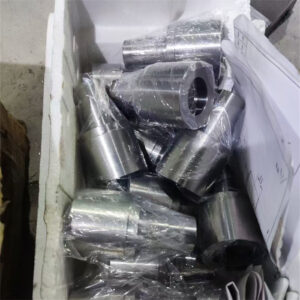Get in touch with us
Leave a message
Explore our extensive stainless steel fasteners range, showcasing austenitic, ferritic, and martensitic grades for a variety of industrial uses. From robust industrial options to specialized corrosion-resistant designs, we provide diverse material compositions and finishes to suit your unique needs. Our expertise spans multiple stainless steel types, delivering top performance and value across various price levels. Whether you require standard or bespoke specifications, our skilled team offers customized solutions supported by industry knowledge.

Stainless Steel Screwsare governed by standards like ASTM A193, A194, and A320, ensuring quality across grades such as 304, 316, 410, and 2205. These standards define properties like corrosion resistance, strength, and finish. For instance, a 304 Stainless Steel Fastener aligns with ASTM A193 for general use, while 316 offers superior corrosion resistance per the same spec. Classifications split into austenitic (e.g., 304, 316), ferritic (e.g., 430), and martensitic (e.g., 410) types, with grades further distinguished by finishes like polished or coated options. Stainless Steel Fasteners, typically ranging from M3 to M100 in size, adhere to similar standards but are often tailored for structural applications.
Stainless Steel Fasteners come in a wide range of sizes to suit diverse needs. Common dimensions include:
This flexibility ensures ss fasteners fit everything from small fabrications to large industrial builds.
Stainless Steel Sheet and Stainless Steel Plate come in various forms and finishes, each tied to specific manufacturing processes:
| Grade | Characteristics | Applications |
|---|---|---|
| 304 Stainless Steel Fasteners | Excellent corrosion resistance, Good formability and weldability, Non-magnetic, Moderate strength | Food processing equipment (e.g., bolts, nuts), Architectural fixtures, Automotive parts (e.g., screws), Kitchen appliances |
| 316 Stainless Steel Fasteners | Superior corrosion resistance (especially in chloride environments), High durability, Non-magnetic | Marine hardware (e.g., fittings), Chemical plant fasteners, Surgical tools, Coastal structures |
| 201 Stainless Steel Fasteners | Good corrosion resistance, Lower cost than 304, Moderate strength, Magnetic | Automotive assemblies, Appliance fittings, Decorative hardware, Industrial fasteners |
| 303 Stainless Steel Fasteners | Excellent machinability, Good corrosion resistance, Non-magnetic, Moderate strength | Precision machinery (e.g., screws), Electrical enclosures, Pump components, General industrial use |
A:Stainless steel fasteners include bolts, nuts, screws, and washers, available in grades like 304 and 316. They’re used to join stainless steel components in corrosive environments like marine or chemical plants.
A:Stainless steel fasteners can be expensive, prone to galling (cold welding) during installation, and less strong than alloy steel in high-temperature or high-stress applications unless heat-treated.
A:The ISO standard for stainless steel fasteners is ISO 3506, which specifies mechanical properties and corrosion resistance for grades like A2 (304) and A4 (316) across various sizes and applications.
A:304 stainless steel fasteners offer good corrosion resistance for general use, while 316 fasteners, with added molybdenum, excel in marine and chloride-rich environments due to superior pitting resistance.
A:The best grade depends on the application: 304 is suitable for indoor or mild outdoor use, while 316 is preferred for marine or chemical settings. For high strength, 17-4 PH stainless steel is also an option.
A:For corrosion resistance, stainless steel grades like 316 are best for harsh environments. For high strength, alloy steels with heat treatment may outperform, but 316 stainless steel strikes a balance for most applications.

Professional manufacturer of premium specialty alloys, offering stainless steel, Hastelloy, nickel-based alloys and processing services. Delivering superior metallurgical solutions for aerospace, petrochemical, marine engineering and other demanding industries.
©2025 alloy-materials.com COPYRIGHT ALL RIGHT RESERVED.